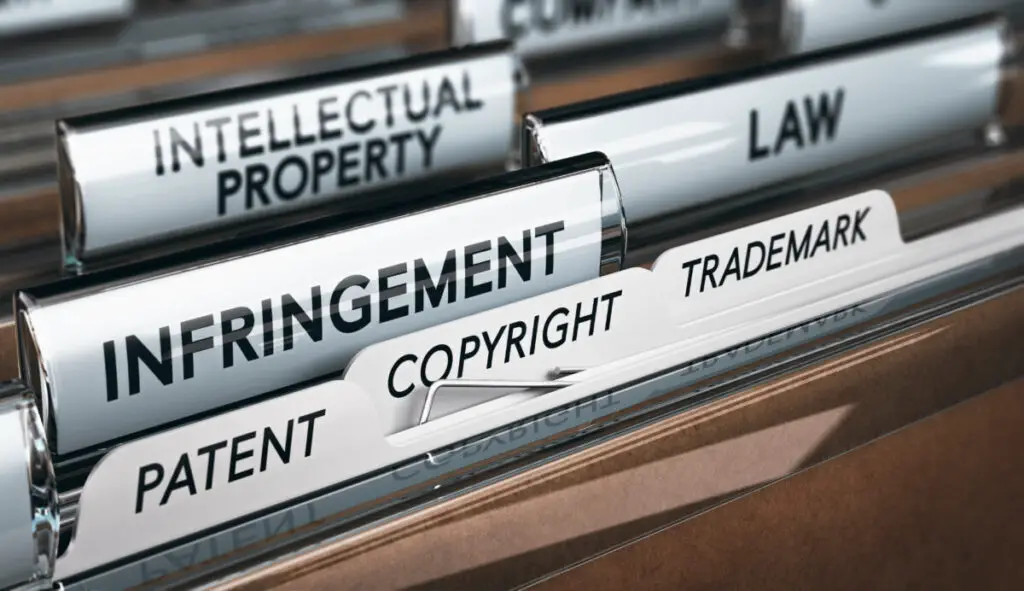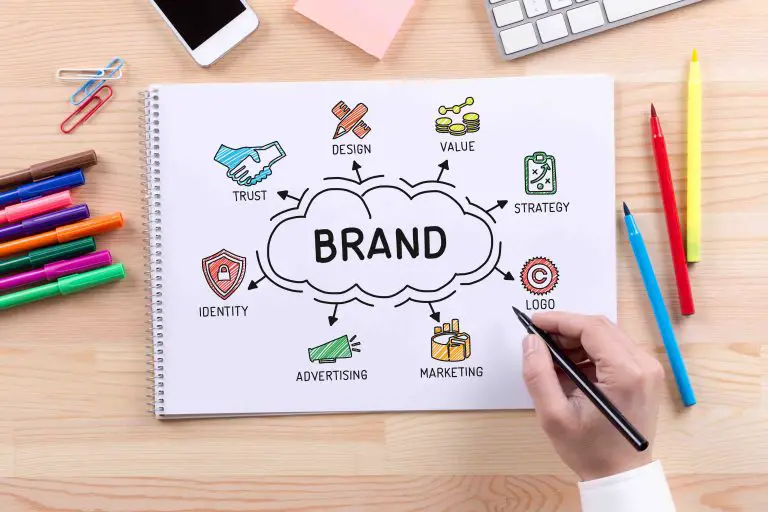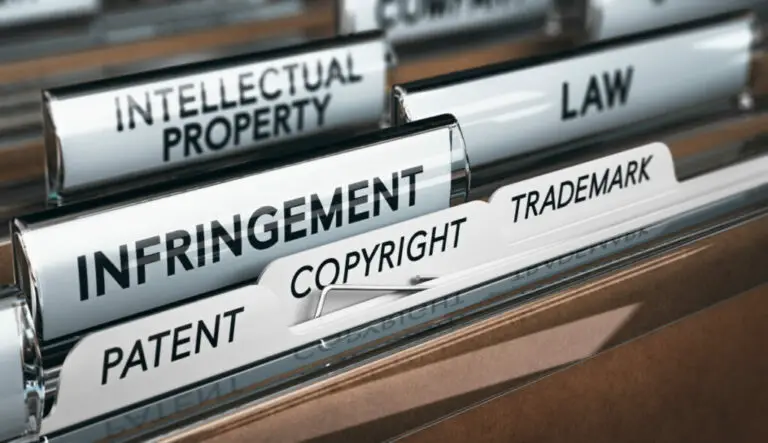What Are the 4 Types of Trademarks
The term trademark gets thrown around a lot in reference to companies, but many people don’t realize that there are actually different types of trademarks. Depending on the type, the word or symbol is treated differently in the legal world.
The four types of trademarks are descriptive, suggestive, arbitrary, and fanciful. Nonprotected marks fall into the fifth category of generic. The different types of trademarks have increasing levels of distinctiveness that correlate with ease of registration, strength, and legal protection.
Taking a closer look at each of these categories will help you better understand the strengths of different trademarks and how they function.
What is a Trademark?
A trademark can be a word, phrase, image, symbol, or design that is associated with a certain good or service for the purpose of distinguishing it from other goods or services. Technically, a trademark is called a service mark when it is associated with a service rather than a good, but the term trademark is commonly used to refer to either. The consumer market relies on trademarks to be able to identify and differentiate different products. Getting a trademark helps reserve a spot in the market, protected from imitation.
You will want to trademark any name or logo that you don’t want other parties to be able to use. Typically anything for a business should be trademarked to avoid the hassle of competitors copying or infringing on your ideas. Success in a competitive market relies on the ability to be distinguished from others.
Essentially anything can be trademarked as long as it is used in a commercial setting for the purpose of distinguishing one legal entity from another. Phrases, words, and symbols are most common, but even a certain shade of a color or a distinct sound could be trademarked when they are used to commercially identify an individual or company.
Registering Your Trademark
Typically we think of trademarks as associated with businesses, but individuals and legal entities can also have trademarks. An image, word, or phrase becomes a trademark when you begin using it to identify you, your business, or your products. This is called owning a trademark and only has minimal legal protection in your local area. To have better-protected rights to your trademark, you will want to register with the U.S. Patent and Trademark Office (USPTO). The registration will allow you to switch from using ‘TM’ or ‘SM’ and instead use the ‘®’ symbol with your trademark.
Once you register with USPTO, you must use the trademark in commerce unless you petition for cancellation. You will need to periodically submit proof of use to avoid expiration or cancellation. Certain forms will need to be submitted between the 5th and 6th year of registration, between the 9th and 10th year of registration, and every ten years following that. This system for keeping registrations up to date ensures continued protection for trademarks that need it, while also removing any trademarks that are no longer active and opening up options for new competition.
If you want to register your trademark outside of the U.S. you can work with the International Trademark Association to get your mark registered wherever you need it to be. If you are producing or selling in other countries you will likely want to register your trademark in those countries as well.
When you have a trademark, you have legal rights to the combination of that mark with whatever good or service it identifies. You do not have any rights to the mark in general. The more specific and distinct your symbol, word, or design is, the easier it will be to protect from imitation and fraud. Having a specific trademark will also help the consumer market more easily identify your brand.
Looking at what makes a trademark fit into each of the four categories shows how important it is to be unique. A unique mark cannot be mistaken for any other purpose, making it easier to protect legally. If the mark is not specific enough, the lines of imitation and fraud become blurred, and you will find it more difficult to protect. (Source)
Fanciful or Coined

The best, strongest, and most distinct category of trademarks is called fanciful or coined trademarks. Fanciful trademarks are so distinct and easy to protect because they are made-up words or marks that hold no meaning outside of the association with the brand and its goods or services.
Coming up with a unique word or image gives the brand protection against imitation because there is no legitimate reason that anyone else would be using the same made-up mark. It is easy to provide legal protection for these marks and it is easy for consumers to identify and distinguish your products.
Many big brands use a fanciful trademark because of the protection it provides. Clorox, Kleenex, Pepsi, and Adidas are all great examples of companies that have coined trademarks. Practically anyone immediately recognizes these words in association with a certain product. This can be a powerful marketing tool. Once a fanciful trademark is established, it has the power to uniquely communicate with consumers. Nothing else can be confused for the trademark, it is reserved solely for the good or service it represents. (Source)
Arbitrary

Arbitrary trademarks are also a strong type of mark. They are still easily protected and fairly distinct. Arbitrary trademarks are different from coined trademarks because they have a real-life meaning outside of their function as a trademark. An arbitrary trademarked word will have a dictionary definition and an arbitrary trademarked symbol or image. This will help it be recognizable as a real item.
While these trademarks have real meaning, this meaning is not associated with the actual good or service it identifies. The mark is used out of context to represent an individual or their company. A good example of an arbitrary trademark is the popular tech brand, Apple. Obviously, the word and image of an apple is a commonly known fruit. The fruit has nothing to do with technology, but this company uses the apple as an arbitrary trademark. The combination of this common item with an unrelated good provides a very distinct representation of the company.
The trademark being unrelated to the actual good or service is what allows the trademark to be strong. The strange connection may seem odd or confusing, but it actually takes the power away from the common meaning of the word or symbol. The unique and unexpected combination makes it easy to legally protect the brand’s trademark.
Arbitrary marks are slightly less strong than fanciful marks because multiple people can use the same trademark in different industries. This isn’t very common, but if the goods or services are completely unrelated and can not be confused, two companies could use the same common word.
The word ‘delta’ is commonly defined as the name for a greek letter but is used as the trademark for both Delta Air Lines and Delta Faucet. Faucets and flights are at no risk of being confused with each other, so they can both legally use the same trademark without issue. This typically will not present any issues with consumers confusing brands, but you do run the risk of association with another individual or company. (Source)
Suggestive

When you select a common word or symbol to represent your brand because of the meaning it holds, then it becomes a suggestive trademark. As the category title implies, this is not a direct description of the good but more of a suggestion towards a desirable trait for the product. People will have to use a little thought and imagination to connect the product with the trademark, but when they find the connection it has the opportunity to imply certain qualities or values about the brand.
This type of trademark may be difficult to protect because it is much less distinctive. When a consumer hears or sees a trademark you want them to know that it is your brand. With suggestive trademarks that hold association to the product, you run the risk of consumers mistaking the trademark for some sort of descriptor of the product rather than its identifying mark.
On the other hand, suggestive trademarks are incredible for marketing. If the mark is successful, every time a consumer hears or sees the brand, they will associate the product with whatever desirable quality the trademark is subtly suggesting. Striking the right balance between distinctiveness and suggestiveness can make for a very successful suggestive trademark. A good suggestive trademark should be different enough from the product that it is clearly a legal identifier, while still having a clear enough connection to the product that consumers can recognize the association.
A good example of this balance is the car company, Jaguar. Jaguars do not describe sports cars, but they suggest certain qualities. Jungle cats and cars are not commonly associated, making the mark distinct and strong. However, jaguars are definitely associated with being fast, a quality that a sports car company would want to promote in their products. The connection is subtle but obvious enough for the common consumer to recognize. Now, when a consumer sees jaguar branding, they subconsciously are thinking about the speed of the car.
Descriptive

Descriptive trademarks are even weaker than suggestive because the trademark is directly describing the product. This allows for a lot of confusion, separating the trademark from product descriptors, lowering distinctiveness, and ultimately making the trademark quite difficult to protect. A trademark that is not clearly a trademark makes for a difficult legal defense.
Descriptive trademarks may also encounter issues in being registered with the USPTO. To be approved for registration, a trademark needs to have a certain level of distinctness. Additionally, the USPTO does not want to restrict generic descriptive words to a single legal entity. For example, it would not be logical to only allow one beverage company to use the word ‘refreshing’. A lack of registration will also add to the difficulty of legal protection.
Using a descriptive trademark makes it easier for other companies to infringe on the mark and makes it more difficult for consumers to distinguish the product from competitors. There are not many large, recognizable brands that use descriptive trademarks because they come with a lot of disadvantages and hassle.
Some individuals and companies still choose to use a descriptive trademark because of how clearly it communicates qualities about the product. Any consumer will immediately know exactly what the product is without any extra thought. This can be useful for creating a strong association between a company and a certain product or quality.
Anyone who sees the company American Airlines knows that they provide flights in the U.S. It can be helpful for consumers to know exactly what they can expect from an entity. However, hearing the phrase ‘American Airlines’ may be easily confused with reference to any airline that is in America. The Dress Warehouse, AutoZone, and Holiday Inn are some examples of companies that use a descriptive trademark for their name. (Source)
Generic
Any other identifying words, phrases, images, or symbols fall into a fifth category called Generic. Generic trademarks have zero legal rights and hold no strength as a representation for an individual or company, and are not a type of trademark at all. This includes common names for goods or services like ‘hand soap’, ‘gas station’, or ‘sweater’. These words will never be trademarked and cannot receive any legal protection. Any entity can use these words in association with their good or services.
The only time that a generic word would be able to be trademarked is in combination with other words to create a unique identifier. the word ‘cola’ is generic and non-trademarked because it is the word for a certain flavor. One company cannot have exclusive legal rights to the word because other companies need a way to accurately describe the flavor of their products. However, ‘Coca-Cola’ is trademarked. The combination of ‘Coca-‘ with ‘Cola’ and the familiar white swoosh through bright red under the lettering is a distinct enough mark that ‘Coca-Cola’ has legal protection as a trademark. (Source)








